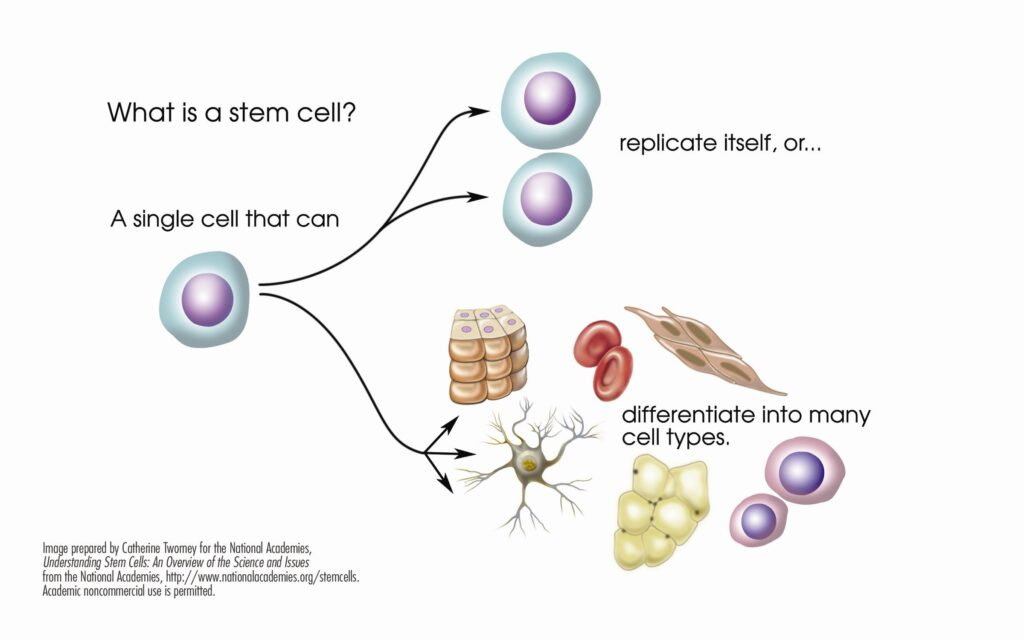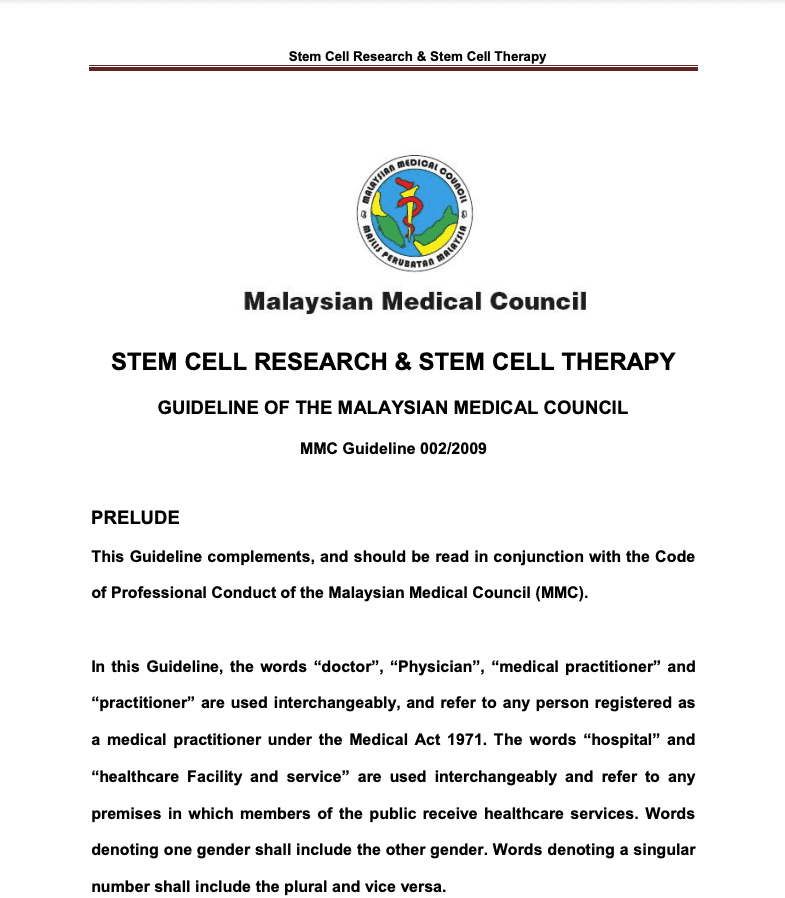Stem cell Malaysia therapy has garnered significant attention in the local medical community, offering promising avenues for treating various health conditions.
Table of Contents
What is Stem Cell?
Stem cells are unique, unspecialized cells with two key characteristics: they can self-renew, producing identical copies of themselves, and they have the potential to differentiate into various specialized cell types. These cells are present in nearly all body tissues, serving as a repair system and maintaining the body’s health by replenishing other cells as needed.

Stem cell therapy is not just a medical phenomenon; it represents a shift in how we approach healing and regeneration.
As the field evolves, more patients explore these options, often finding hope where traditional methods have fallen short. For example, individuals with chronic joint pain have reported significant improvements after undergoing stem cell therapy, highlighting the potential of these treatments.
In addition, the ethical discussions surrounding stem cell research necessitate ongoing dialogue among scientists, ethicists, and the public, ensuring that developments in the field align with societal values.
Public awareness campaigns can educate individuals on the benefits and risks associated with stem cell therapies, ultimately guiding informed decision-making.
This article delves into the history of stem cell research, its discovery, production methods, the surge in its popularity, and the costs associated with exosome injections in Malaysia.
For instance, significant breakthroughs occurred in the late 20th century when researchers successfully isolated stem cells from human tissues, expanding the scope of potential applications.
This period marked the beginning of a new era in regenerative medicine, as scientists began to harness the power of stem cells for treating a variety of conditions, from spinal cord injuries to degenerative diseases.
Furthermore, advancements in technology have facilitated the growth of stem cell research. Techniques such as CRISPR gene editing allow researchers to modify stem cells to enhance their therapeutic potential, opening the door to innovative treatments for genetic disorders.
History and Discovery of Stem Cells
The concept of stem cells dates back to 1868 when German biologist Ernst Haeckel first introduced the term to describe the fertilized egg capable of giving rise to all cell types.
Clinical trials have also played a pivotal role in the development of stem cell therapies. For example, a recent study published in a leading medical journal demonstrated the efficacy of stem cell injections in treating heart disease, showcasing how research directly translates to patient care.
In the 1950s, researchers discovered that bone marrow contains at least two kinds of stem cells: hematopoietic stem cells, which form all blood cell types, and stromal stem cells, which can generate bone, cartilage, and fat cells.
Autologous transplantation, where stem cells are harvested from the patient, has become increasingly popular. This method minimizes the risk of rejection and complications, as the body’s own cells are used for treatment. Patients often experience faster recovery times and improved outcomes, making this approach appealing to both healthcare providers and patients.
These foundational discoveries paved the way for advanced stem cell research and therapies. Source MMC

Production of Stem Cell Malaysia
In Malaysia, renowned medical institutions have begun integrating stem cell therapies into their offerings, providing patients with access to cutting-edge treatments. Hospitals and clinics are collaborating with research institutions to ensure that the latest advancements are readily available to those in need.
In addition to hematopoietic stem cell transplants, innovative therapies such as mesenchymal stem cell treatments are being explored for their ability to regenerate damaged tissues. These advances signify Malaysia’s commitment to remaining at the forefront of medical science.
Stem cells are primarily categorized into embryonic stem cells and adult stem cells. Embryonic stem cells are derived from early-stage embryos and have the potential to develop into any cell type.
The benefits of exosome therapy extend beyond just physical healing; patients have reported improvements in their overall well-being, including enhanced energy levels and a better quality of life. These positive outcomes encourage more individuals to consider exosome injections as a viable treatment option.
Moreover, the development of personalized treatment plans is a growing trend in the field of regenerative medicine. Clinics are now tailoring exosome therapies to meet the unique needs of each patient, ensuring that treatments are both effective and suitable for individual health conditions.
Adult stem cells, found in various tissues like bone marrow and fat, are typically multipotent, meaning they can develop into a limited range of cell types.
It’s essential for patients to engage in thorough discussions with their healthcare providers, exploring all potential options and understanding the science behind each treatment. This dialogue empowers individuals to make informed choices regarding their health.
In therapeutic settings, stem cells can be harvested from a patient’s own body (autologous transplantation) or from a donor (allogeneic transplantation).
As we look to the future, the landscape of stem cell therapy in Malaysia is poised for significant growth. With ongoing research and advancements in technology, patients can expect even more innovative therapies that could revolutionize treatment options and improve health outcomes.
The harvested cells are then cultured and expanded in controlled laboratory environments before being reintroduced into the patient’s body to promote repair and regeneration.
The Rise of Stem Cell Therapy in Malaysia
Malaysia has witnessed a growing interest in stem cell therapy due to its potential to treat conditions previously deemed untreatable. The establishment of comprehensive healthcare services, including private healthcare providers and government-funded hospitals, has facilitated the integration of advanced medical treatments like stem cell therapy.
Between 1987 and 2015, Malaysia performed 1,987 allogeneic and 1,648 autologous hematopoietic stem cell transplant procedures, reflecting the country’s commitment to advancing medical research and treatment options. Source: ResearchGate
Exosome Injections: Costs in Malaysia
Exosome therapy, a cutting-edge treatment utilizing extracellular vesicles to promote cell communication and regeneration, has gained popularity in Malaysia.
The cost of exosome injections varies depending on the clinic and the specific treatment plan. For instance, Premier Clinic offers exosome therapy starting from RM6,000 per session, with the price based on the patient’s health condition and the doctor’s expertise (premier-clinic.com).
Similarly, Dr. Chong Clinic provides anti-aging exosome therapy with prices starting from RM2,000 (drchongclinic.com)
More on Stem Cell Therapy price in Malaysia
Patients need to consult with certified medical professionals to determine the most suitable treatment plan and understand the associated costs.
Conclusion
Stem cell therapy represents a significant advancement in Malaysia’s medical landscape, offering hope for patients with various health conditions.
As research progresses and more clinical applications emerge, it’s crucial for individuals to seek treatments from reputable medical providers to ensure safety and efficacy.
